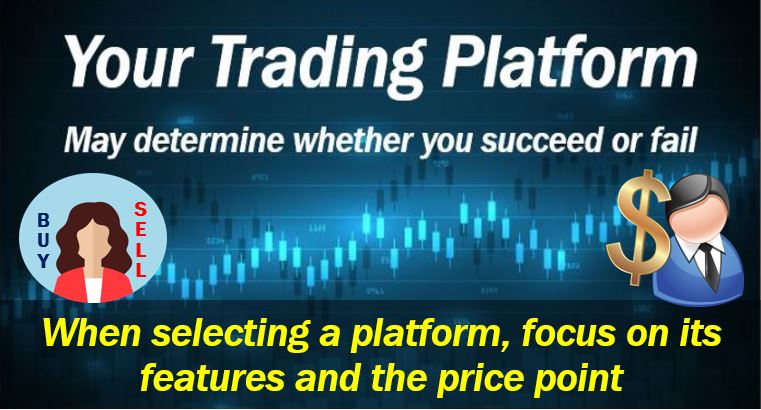Online trading platforms are software programs used to invest online. This method of executing trades has replaced physical trading floors as the major channel of transactions and has uncoupled trading from specific physical locations.

Trading platforms can be tied to one intermediary, or they can allow users to choose their broker of choice or even trade directly in some cases. There are countless trading platforms catering to different styles of trading and demographics, so it can be a challenge for investors to choose the one that best suits their goals. This article lays out a few principles and key questions to help narrow the field and help investors successfully navigate the world of trading platforms and online investing.
How to select a trading platform
Most investors should focus on two key factors when selecting a trading platform: the features offered and the price point.
Built-in news feed
The suitability of the features will usually depend on what kind of trader the user is. For example, day traders who are constantly and swiftly buying and selling may want a built-in news feed so that they can profit from market movements tied to specific current events. This type of trader will also want to consider the platform’s latency, which means how long it takes to execute transactions.
Optimized coding
A well-designed platform will have optimized coding that limits delays and the monetary losses they could cause. Investors focusing on a specific type of security, such as futures or options, may wish to have charts or technical research focused specifically on these products.
Price
Price is another consideration when choosing a platform. Obviously, lower fees are generally preferable to high commissions that eat into margins, but in some cases the value provided by specific features on the platform can justify a higher cost. There is also an increasing trend toward platforms with no fees, which often profit on the interest earned on the money deposited in their investment accounts.
Ease of use
How well is raw data translated into graphs and charts that can be used and adapted for decision-making? How easy is it to navigate from one area of the platform to another?
Mobility
Is the platform design optimized for smartphones so investors can access all features, even when on the go? Does it employ cloud technology so traders can use or save their information, regardless of where they are?
Why use trading platforms?
Unlike in-person brokers for individual customers or trading floors for professional investors, trading platforms are instantaneous. This immediacy allows investors to react immediately to events or market movements in order to profit from them or limit losses, a crucial benefit in today’s fast-pace global trading environment.
While new investors may feel cut adrift when first venturing into this world of electronic transactions, a good platform will usually have training resources to help them chart a course in a sea of information. Learning to navigate these waters will be time well spent in a world where trades are increasingly moving to the digital realm.
Interesting related article: “What is a Day Trader?”

